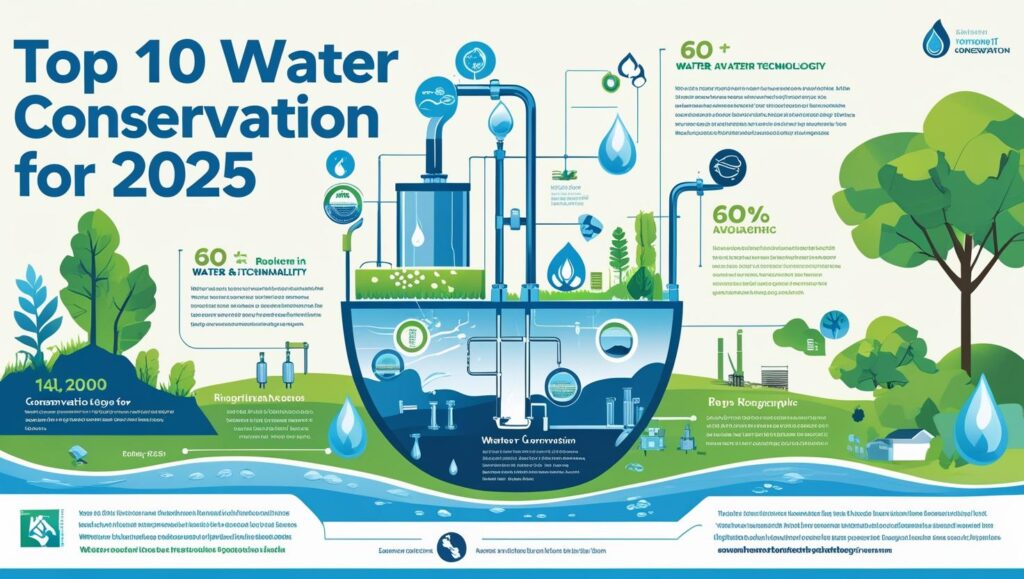With climate change, population growth, and increasing water scarcity, water conservation technologies have become more important than ever. In 2025, innovative solutions are helping homes, businesses, and cities save millions of gallons of water while reducing costs and environmental impact. This article explores the top 10 technologies leading the way in water efficiency this year.
1. Smart Irrigation Systems
Smart irrigation uses weather data, soil sensors, and AI algorithms to deliver the exact amount of water needed for crops and landscapes. These systems prevent overwatering and can reduce water usage by up to 50% compared to traditional methods.
2. Greywater Recycling Systems
Greywater recycling captures lightly used water from showers, sinks, and laundry, treats it, and reuses it for non-potable purposes like irrigation and toilet flushing. By 2025, compact and affordable home units have made this technology more accessible to households worldwide.
3. Atmospheric Water Generators (AWGs)
AWGs extract moisture from the air and convert it into clean drinking water. Modern AWGs are highly energy-efficient, making them a viable solution for remote areas and communities facing chronic water shortages.
4. AI-Powered Leak Detection
Undetected leaks waste billions of gallons of water annually. AI-based leak detection systems monitor water flow in real time, sending alerts to users when irregular patterns occur. This helps fix leaks before they cause significant water loss or property damage.
5. Low-Flow Fixtures
Low-flow faucets, showerheads, and toilets use advanced aeration and pressure-compensation technology to reduce water consumption without sacrificing performance. By 2025, many models are stylish, affordable, and easy to retrofit in homes and businesses.
6. Desalination with Renewable Energy
Traditional desalination plants are energy-intensive, but in 2025, renewable-powered desalination systems are becoming more common. Solar- and wind-powered units make it possible to produce fresh water from seawater with minimal environmental impact.
7. Smart Water Meters
Smart water meters provide real-time usage data to consumers and utilities, helping identify inefficiencies and encouraging responsible water habits. Many cities have adopted these meters to improve water management and conservation efforts.
8. Water-Saving Industrial Processes
Industries such as manufacturing and food processing are adopting closed-loop water systems, filtration technologies, and water reuse processes to cut down their consumption. These solutions not only conserve water but also reduce operating costs.
9. Rainwater Harvesting 2.0
Rainwater harvesting systems have evolved with better filtration, storage, and smart control systems. In 2025, many urban buildings integrate rainwater capture directly into plumbing systems for everyday use.
10. Blockchain Water Trading Platforms
Blockchain technology is now being used to facilitate transparent water rights trading, enabling efficient allocation of resources in areas facing scarcity. This innovative approach helps balance supply and demand across regions.
The Impact of Water Conservation Technologies
Each of these water conservation technologies contributes to solving the global water crisis. By combining smart monitoring, recycling, renewable energy, and innovative management, they help communities save water, lower costs, and reduce environmental footprints.
Water scarcity is no longer just a distant concern—it’s a current reality. Embracing these technologies in 2025 ensures a more sustainable and water-secure future for all.



